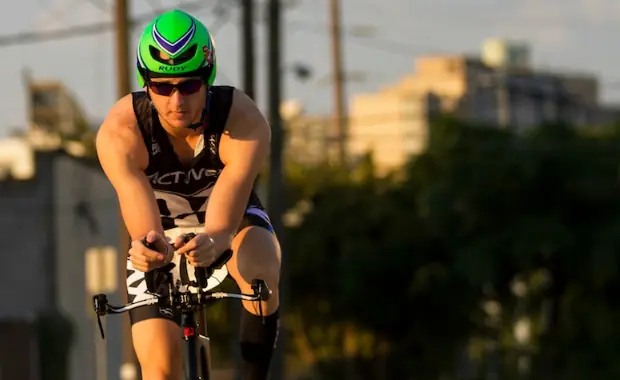
Although considered a sport in its own right, we all know triathlon is really three sports rolled into one. With each of these three sports requiring its own set of gear, the endless amount of options can be a headache.
"Option One" promises improved aerodynamics, but look again and "Option Two" promises increased comfort. For even the most veteran triathlete, it's tough to navigate these choices to find the best ratio of fit, performance and cost.
For a sport as hypersensitive as triathlon, competitors go to great lengths to gain any advantage available. Saving a few seconds can mean the difference between first and second place; and if two identical athletes race head-to-head, a piece of gear could determine the outcome.
More: A Guy, a Girl & a Jawbreaker: Oakley Jawbreaker w/ Prizm Road Review
Sunglasses, although often overlooked, fill a highly specific role in triathlon. It's gear you use on both the bike and run courses, so they have to perform at a high level for two completely different sports.
Triathlon bikes feature one of the most extreme riding positions of any bicycle, designed to improve the rider's aerodynamics and, therefore, transport the rider into T2 in less time. In such an aggressive position, the rider looks almost exclusively up through the top of the lens, checking the course for hazards and turns far down the road. The lenses need to feature a wide field-of-view appropriate for this position.
Triathlon bike courses are generally flat and windy, and elite athletes can sustain speeds faster than 20 mph for the entire length of the course. This means sunglasses need to protect the eyes for four-plus hours from wind, sun and moisture. This is even more important for contact-wearing athletes, whose vision is most affected by wind and dust.
Oakley's line of cycling sunglasses fills this niche perfectly. From the flashier Jawbreaker to the more conservative Flak 2.0, triathletes turn to Oakley for dependable frames and lenses that help them reach the finish line. This holds true for more than age-groupers--many of the most elite triathletes in the professional field trust Oakley's products and wear them in races with the toughest conditions in the world.
- 1
- of
- 2
About the Author









Discuss This Article